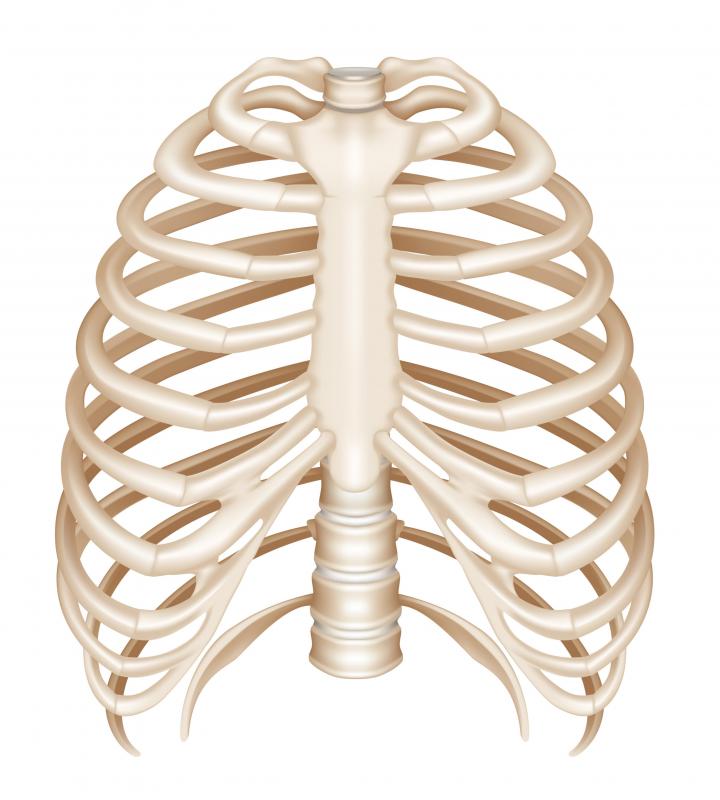At WiseGEEK, we're committed to delivering accurate, trustworthy information. Our expert-authored content is rigorously fact-checked and sourced from credible authorities. Discover how we uphold the highest standards in providing you with reliable knowledge.
What is Thoracic Trauma?
Thoracic trauma is physical trauma to the chest region. It is a cause for medical concern because the chest houses the heart and lungs along with structures like the trachea, aorta, and esophagus. Patients with thoracic trauma can be medically unstable and may need surgery and other treatments to recover successfully. Cardiothoracic surgeons are often involved in the evaluation and treatment of patients with chest trauma.
One of the most common causes of thoracic trauma is a car accident. While seatbelts are designed to limit injuries to people involved in vehicle collisions, injuries to the chest region are still possible. Drivers are especially at risk, as they may slam into the steering column if the vehicle does not have airbags. Gunshots are another cause of injury to the thorax, especially when someone is shooting to kill, and people can also be injured in beatings and falls.

When a patient presents with thoracic trauma, often there may be immediate medical problems. Airway obstruction can occur as a result of damage to the trachea, one or more broken ribs are common, the aorta may be at risk of rupture, and the patient could have a collapsed lung or other lung complications. Assessment of the patient is performed quickly to identify all the injuries and perform triage with the goal of finding the most urgent injuries and treating them as quickly as possible.

Treatment for thoracic trauma commonly requires surgery to repair injured tissue. The patient may also need transfusions to replace lost blood, and rest for an extended period of time after the injury to allow the body to recover is often necessary as well. During the rest period, supportive care can include everything from respiratory therapy to help strengthen the lungs to reconstructive surgery to replace missing or damaged tissue.
It is important for people to be aware that sometimes thoracic trauma does not cause immediate symptoms. A patient may appear slightly winded, but may not have obvious signs of bruising or bleeding. However, there may be injuries inside the chest and if the patient is moved or stressed, these injuries could become more apparent. People should always be carefully evaluated after potential causes of thoracic trauma to see if there are any chest injuries and determine the extent of those injuries. If someone develops difficulty breathing, an altered level of consciousness, or pale, clammy skin in the wake of an injury, it can be a sign that shock is setting in, and the patient should be taken for immediate medical treatment.
AS FEATURED ON:
AS FEATURED ON:












Discuss this Article
Post your comments